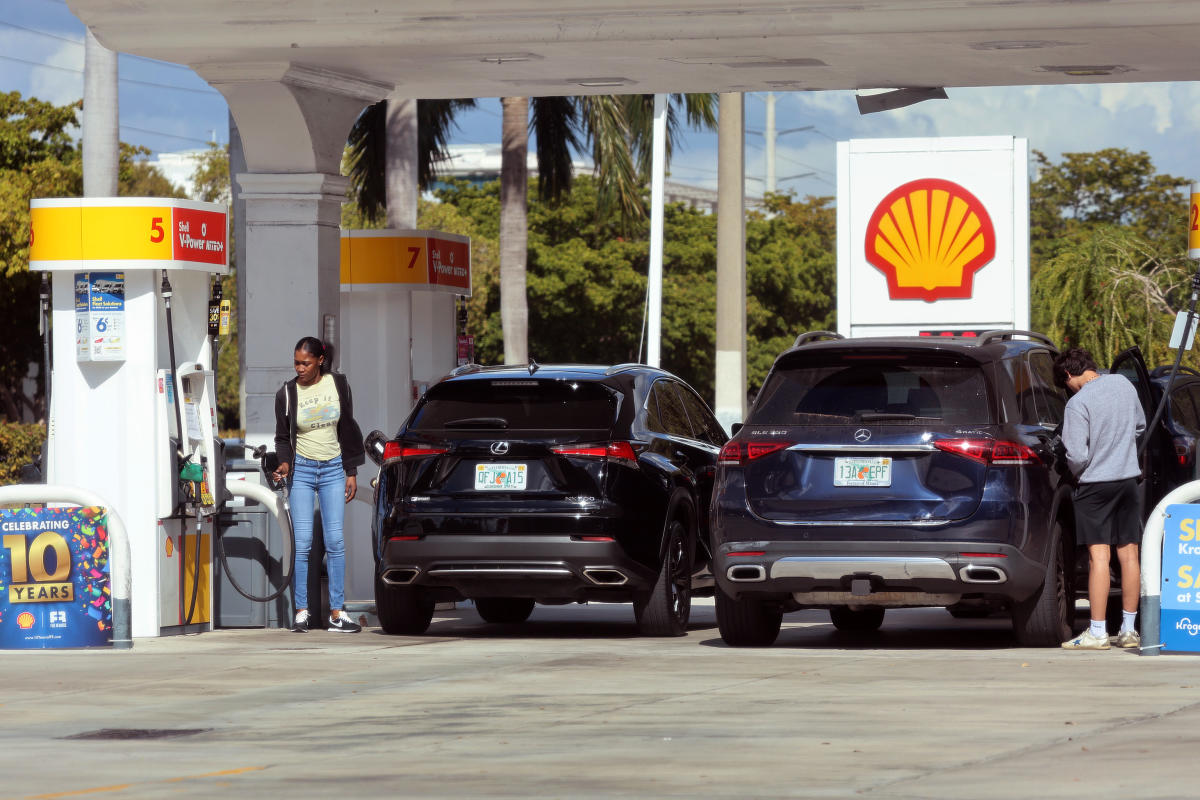Personal Finance
Here’s How Much Gas Prices Could Rise After OPEC’s Supply Cuts

Drivers should expect gas prices to rise following Sunday’s announcement of oil supply cuts from Saudi Arabia and other oil-producing countries in the OPEC+ group.
The price of the average gallon of gas, which currently stands at $3.48, could go up by as much as 15 cents as a result of the cuts, Patrick De Haan, GasBuddy’s head of petroleum, said in a tweet. Gas prices have increased by about 12 cents in the past month due to “robust demand” from drivers and higher oil prices, according to AAA.
Crude oil, which accounts for about 53% of what drivers pay for a gallon of gas, was trading at around $80 per a barrel on Monday after shooting up by more than 6% following the announcement, according to the West Texas Intermediate measure.
The price is up about 19% from a recent low just below $67 on March 17. Still, the price of oil is more than 22% lower than it was a year ago, a couple months after Russia’s invasion of Ukraine sent oil and gas prices soaring.
The next step
Average gas prices are currently at or above $3 per gallon in all 50 states, and it appears unlikely that prices anywhere will drop following the supply cut, which OPEC said will total 1.6 million barrels per day and is “aimed at supporting the stability of the oil market.”
Here’s a look at gas prices around the country now, and where they’re likely heading:
-
The state with the cheapest gasoline is Mississippi, where the average is $3 a gallon. Seven of the 10 states with the cheapest gas are in the South, where proximity to refineries and lower taxes generally make for lower gas prices.
-
The average gallon costs at least $4 in five states — California ($4.79), Hawaii ($4.78), Arizona ($4.28), Washington ($4.24) and Nevada ($4.19) — and more states could soon join them.
-
Even before the cut, which OPEC says will start in May and last through the end of the year, experts were expecting gas prices to rise this spring.
-
GasBuddy recently reported that a $4 national average is possible by Memorial Day, noting that prices typically rise as temperatures warm.
-
The seasonal trend is related to the annual transition to more expensive summer-grade gasoline, which usually coincides with rising demand as the weather improves and the busiest summer driving months approach.
-
Even if prices rise as forecast, they’ll be lower than last summer — when the national average topped $5 a gallon.
More from Money:
7 Best Car Loan Rates of 2023
The Share of New Cars That Are Electric Vehicles Has Tripled in 2 Years
How to Save Money on Gas
© Copyright 2023 Money Group, LLC. All Rights Reserved.
This article originally appeared on Money.com and may contain affiliate links for which Money receives compensation. Opinions expressed in this article are the author’s alone, not those of a third-party entity, and have not been reviewed, approved, or otherwise endorsed. Offers may be subject to change without notice. For more information, read Money’s full disclaimer.
Read the full article here

-

 Side Hustles6 days ago
Side Hustles6 days agoKickstart Your Year With These Entrepreneurial Health Checkups
-

 Side Hustles5 days ago
Side Hustles5 days agoExpand Your Global Reach with Access to More Than 150 Languages for Life
-

 Side Hustles4 days ago
Side Hustles4 days agoKFC Announces Saucy, a Chicken Tenders-Focused Spinoff
-

 Side Hustles5 days ago
Side Hustles5 days agoThis AI is the Key to Unlocking Explosive Sales Growth in 2025
-

 Investing4 days ago
Investing4 days agoPalantir, Anduril join forces with tech groups to bid for Pentagon contracts, FT reports By Reuters
-

 Side Hustles3 days ago
Side Hustles3 days ago4 Ways Content Can Make or Break the Customer Experience
-

 Passive Income7 days ago
Passive Income7 days ago5 Key Success Factors of Thriving Entrepreneurs
-

 Passive Income6 days ago
Passive Income6 days agoHow to Motivate, Inspire and Energize Your Employees


















